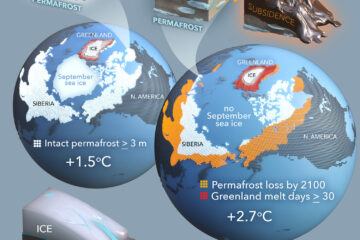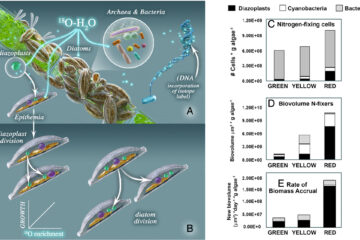Influences of travertine dam formation on leaf litter decomposition and algal accrual
At the time of this study Fossil Creek was being considered as a site for the restoration of a native fish assemblage, however there was concern amongst fisheries managers about the stream being food limited due to calcium carbonate (travertine) deposition. To evaluate the effects of travertine deposition on the aquatic food base we used leaf litterbags to compare decomposition rates and nutrient diffusing artificial substrates to compare algal accrual rates and nutrient limitation between two distinct reaches in Fossil creek: a travertine dam forming reach and a reach without travertine dam formation (riffle-pool reach). Decomposition was significantly faster in the travertine dam forming reach than in the riffle-pool reach. Macroinvertebrates in the leaf packs were more diverse in the travertine reach but more abundant in the riffle-pool reach. Algae accrued more quickly in the travertine reach than in the riffle-pool reach and only responded to nutrient enrichment in the travertine reach. This study was conducted prior to a hydroelectric dam decommissioning project in Fossil Creek where full flows were reintroduced back into the stream after a century of diversion. Our results suggest concurrent increases in algal productivity, decomposition, and macroinvertebrate diversity in the next decade as travertine dams rebuild, providing a richer food base for fish and other aquatic organisms.


